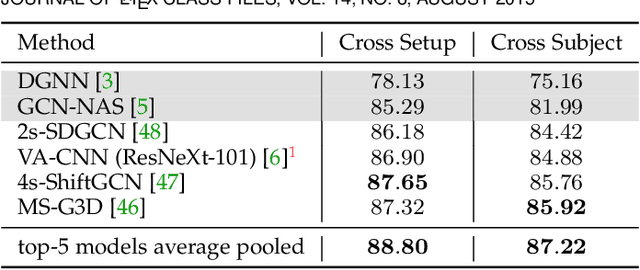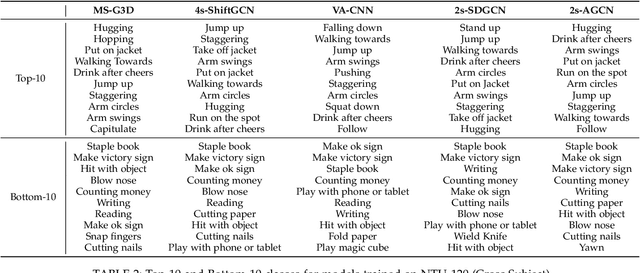Aditya Aggarwal
Household navigation and manipulation for everyday object rearrangement tasks
Dec 11, 2023



Abstract:We consider the problem of building an assistive robotic system that can help humans in daily household cleanup tasks. Creating such an autonomous system in real-world environments is inherently quite challenging, as a general solution may not suit the preferences of a particular customer. Moreover, such a system consists of multi-objective tasks comprising -- (i) Detection of misplaced objects and prediction of their potentially correct placements, (ii) Fine-grained manipulation for stable object grasping, and (iii) Room-to-room navigation for transferring objects in unseen environments. This work systematically tackles each component and integrates them into a complete object rearrangement pipeline. To validate our proposed system, we conduct multiple experiments on a real robotic platform involving multi-room object transfer, user preference-based placement, and complex pick-and-place tasks. Project page: https://sites.google.com/eng.ucsd.edu/home-robot
Towards Automating Retinoscopy for Refractive Error Diagnosis
Aug 10, 2022



Abstract:Refractive error is the most common eye disorder and is the key cause behind correctable visual impairment, responsible for nearly 80% of the visual impairment in the US. Refractive error can be diagnosed using multiple methods, including subjective refraction, retinoscopy, and autorefractors. Although subjective refraction is the gold standard, it requires cooperation from the patient and hence is not suitable for infants, young children, and developmentally delayed adults. Retinoscopy is an objective refraction method that does not require any input from the patient. However, retinoscopy requires a lens kit and a trained examiner, which limits its use for mass screening. In this work, we automate retinoscopy by attaching a smartphone to a retinoscope and recording retinoscopic videos with the patient wearing a custom pair of paper frames. We develop a video processing pipeline that takes retinoscopic videos as input and estimates the net refractive error based on our proposed extension of the retinoscopy mathematical model. Our system alleviates the need for a lens kit and can be performed by an untrained examiner. In a clinical trial with 185 eyes, we achieved a sensitivity of 91.0% and specificity of 74.0% on refractive error diagnosis. Moreover, the mean absolute error of our approach was 0.75$\pm$0.67D on net refractive error estimation compared to subjective refraction measurements. Our results indicate that our approach has the potential to be used as a retinoscopy-based refractive error screening tool in real-world medical settings.
Quo Vadis, Skeleton Action Recognition ?
Jul 04, 2020



Abstract:In this paper, we study current and upcoming frontiers across the landscape of skeleton-based human action recognition. To begin with, we benchmark state-of-the-art models on the NTU-120 dataset and provide multi-layered assessment of the results. To examine skeleton action recognition 'in the wild', we introduce Skeletics-152, a curated and 3-D pose-annotated subset of RGB videos sourced from Kinetics-700, a large-scale action dataset. The results from benchmarking the top performers of NTU-120 on Skeletics-152 reveal the challenges and domain gap induced by actions 'in the wild'. We extend our study to include out-of-context actions by introducing Skeleton-Mimetics, a dataset derived from the recently introduced Mimetics dataset. Finally, as a new frontier for action recognition, we introduce Metaphorics, a dataset with caption-style annotated YouTube videos of the popular social game Dumb Charades and interpretative dance performances. Overall, our work characterizes the strengths and limitations of existing approaches and datasets. It also provides an assessment of top-performing approaches across a spectrum of activity settings and via the introduced datasets, proposes new frontiers for human action recognition.
Reconstruct, Rasterize and Backprop: Dense shape and pose estimation from a single image
Apr 25, 2020



Abstract:This paper presents a new system to obtain dense object reconstructions along with 6-DoF poses from a single image. Geared towards high fidelity reconstruction, several recent approaches leverage implicit surface representations and deep neural networks to estimate a 3D mesh of an object, given a single image. However, all such approaches recover only the shape of an object; the reconstruction is often in a canonical frame, unsuitable for downstream robotics tasks. To this end, we leverage recent advances in differentiable rendering (in particular, rasterization) to close the loop with 3D reconstruction in camera frame. We demonstrate that our approach---dubbed reconstruct, rasterize and backprop (RRB) achieves significantly lower pose estimation errors compared to prior art, and is able to recover dense object shapes and poses from imagery. We further extend our results to an (offline) setup, where we demonstrate a dense monocular object-centric egomotion estimation system.
 Add to Chrome
Add to Chrome Add to Firefox
Add to Firefox Add to Edge
Add to Edge